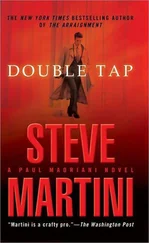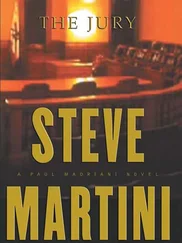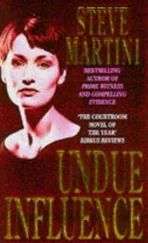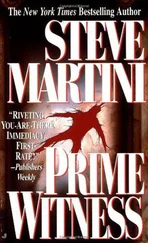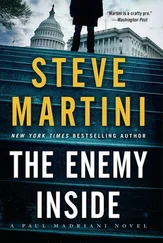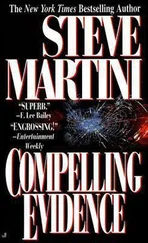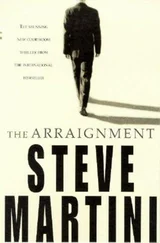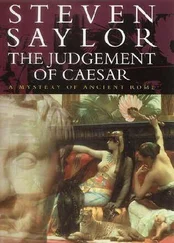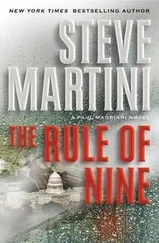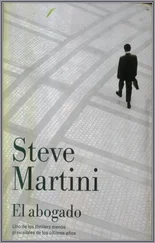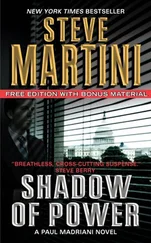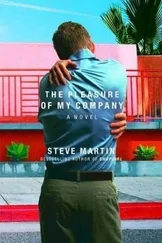Steve Martini - The Judge
Здесь есть возможность читать онлайн «Steve Martini - The Judge» весь текст электронной книги совершенно бесплатно (целиком полную версию без сокращений). В некоторых случаях можно слушать аудио, скачать через торрент в формате fb2 и присутствует краткое содержание. Год выпуска: 2011, Издательство: Penguin Group US, Жанр: Триллер, на английском языке. Описание произведения, (предисловие) а так же отзывы посетителей доступны на портале библиотеки ЛибКат.
- Название:The Judge
- Автор:
- Издательство:Penguin Group US
- Жанр:
- Год:2011
- ISBN:нет данных
- Рейтинг книги:4 / 5. Голосов: 1
-
Избранное:Добавить в избранное
- Отзывы:
-
Ваша оценка:
- 80
- 1
- 2
- 3
- 4
- 5
The Judge: краткое содержание, описание и аннотация
Предлагаем к чтению аннотацию, описание, краткое содержание или предисловие (зависит от того, что написал сам автор книги «The Judge»). Если вы не нашли необходимую информацию о книге — напишите в комментариях, мы постараемся отыскать её.
The Judge — читать онлайн бесплатно полную книгу (весь текст) целиком
Ниже представлен текст книги, разбитый по страницам. Система сохранения места последней прочитанной страницы, позволяет с удобством читать онлайн бесплатно книгу «The Judge», без необходимости каждый раз заново искать на чём Вы остановились. Поставьте закладку, и сможете в любой момент перейти на страницу, на которой закончили чтение.
Интервал:
Закладка:
He covers the so-called EDX process in similar shorthand fashion. A lot of yawning from the box.
“So you can tell precisely how much iron or copper, or magnesium, so-called impurities, are contained in a sample of metal?”
“That’s right. In theory you take the scrapings from the table, another scraping from a piece of jewelry, and compare them for chemical composition, and in particular the existence of known impurities, trace elements, in known quantities. If there’s enough of them, and they match, voilà .”
“And you can do this with minute amounts of metal?”
“We can. In fact we did not use all of the scrapings we took from the table.”
“You still have more of that sample?”
“We do.”
“So you could turn it over to the police if they needed to do their own tests?”
“We could,” he says, “but there’s no need. They took their own scrapings from the same area.”
This is the point I wish to make; that the cops took their own evidence and have buried it.
“Do you know whether they analyzed the portion they took?”
“Objection,” says Kline. “Hearsay.”
“I’m asking if the witness knows from personal experience,” I tell Radovich.
“Do you know?” says the judge.
“Yes,” says DeShield. “I was present for part of the testing.”
“Overruled,” says Radovich.
“They did tests on the defendant’s jewelry,” says DeShield.
“All of it?”
“To my knowledge, yes.”
“Let’s come back to that later,” I say. “First, can you tell us what you discovered as a result of your analysis?”
“It would be my opinion that whatever made those scratches on the table and left traces of its own metal was custom-made and very expensive,” says the witness.
“And what is that opinion based on?”
“The chemical composition,” says DeShield. “Very high gold content. Twenty-two karat. Somewhat unique for jewelry. Used mostly in India, where labor costs make design and construction of custom-made items of nominal concern. People buy gold there for its intrinsic value. A hedge against inflation,” he says.
“Is that your opinion as to the source of this jewelry?”
“Most likely. Very little is imported for sale here. Too expensive,” says DeShield.
“Did you find markers? Any impurities in the metal?”
“No. It’s the problem with gold of that quality,” he says. “Trace elements-lead, iron, magnesium-these normally will have leached out long ago.”
There’s the semblance of a smile from Stobel, and a knowing glance from Kline, who actually slaps the table in relief, though he tries to conceal this as merely stretching when he realizes he has drawn attention.
“So there is no way chemically to determine a positive identification between the trace metal and an item of jewelry?”
“Not chemically. No.”
“Is there another way?”
“In my opinion, it is possible.”
The smile melts on Kline’s face.
“How?”
“Tool marks,” says the witness.
DeShield had come to me with this a week ago. While he could not match the metals because of their purity, there is another common characteristic of gold. It is malleable, soft, especially in the twenty-two-karat variety he has identified here. He now explains this to the jury.
“The fact is that the underside of that table contains small ridges, raised areas that are part of its design. These are unique in their size and spacing.”
He has a picture to illustrate this, and we place it on the easel, a ten-power magnification that makes these grooves look like the mountains of the moon or, more accurately, according to DeShield, the teeth on a key.
“Find gold jewelry with gouges that match those grooves, and you would have positive identification.”
I allow this to seep in at Kline’s table, like sludge in beach sand, while I plow through our box of evidence. With the rustle of paper, he is all eyes. For a moment he gets out of his chair, looks at Stobel.
“Your Honor, could we approach?”
“Not now,” says Radovich.
Kline would like to break a dramatic moment. He can’t be sure, but there is a chance we have the missing object, the item of gold. How, he cannot know.
I pull out a paper sack, sealed with an evidence tag. All of these items have been collected by us under the watchful eye and direction of the special master, appointed by the court to ensure that there are no chain-of-custody problems, allegations of hanky-panky with the physical evidence. They have been examined and sealed in evidence bags by the special master and turned over to the court.
“Mr. DeShield, I’m going to show you a bag and ask you if you can identify its contents.”
I hand this to him. He reads the tag and opens the bag.
“A number of items of jewelry,” he says.
Kline gives me a look, a pained expression, as if I were leaving him suspended in air. He doesn’t sit but drifts to the witness for a look over my shoulder.
“And where did this particular jewelry come from?”
“The police department,” says DeShield.
“And where did they get it?”
“From the defendant’s home,” he says. “It’s contained in an inner bag signed by Detective Stobel, and there is an inventory sheet,” he says.
“And you retrieved this from the police department with the special master?”
“I did.”
“Why did you do this?”
“Because the prosecution was not going to place it in evidence,” he says.
“Objection,” says Kline. “How could he know that?”
“It’s a given,” I say. “You have closed your case and the jury has not seen it.”
Radovich nods. “Overruled. The answer will stand.”
“Do you know whether this is all the jewelry belonging to the defendant?”
“I’m told that it’s all the jewelry belonging to the defendant that the police found when they conducted a search of his home.”
“And do you know whether they examined it for chemical composition, or comparison to the traces of metal found on the victim’s coffee table?”
“I’m informed that they did. I have a copy of their report.”
All the reasons you don’t want to bury unproductive evidence. The other side will beat you over the head with it.
“And what did they find?” I ask.
“They were able to exclude every piece as not consistent with the chemical composition of the traces of metal found on the table.”
“And have you examined the jewelry belonging to the defendant?”
“I have.”
“And do you confirm the findings of the police crime laboratory that this jewelry belonging to the defendant does not correspond to the chemical composition of the trace metals found on that table?”
“I do.”
“And have you examined these pieces of jewelry to determine if any of them contain tool marks corresponding to the ridges on that table?”
“I have.”
“And what did you find?”
“None of the pieces contain such tool marks.”
“And to your knowledge, all of this information was available to the police, was it not?”
“Yes.”
Kline looks at me at this moment, seething with anger.
“Thank you. Your witness.”
He cannot resist the obvious question, even before he reaches the podium.
“Mr. DeShield,” he says, “did you not just tell us that the item of jewelry in question is likely to have been ripped off of the perpetrator?”
“It’s a distinct possibility,” says the witness.
“Then isn’t it probable that the item in question would not have been in the defendant’s home when the police searched it?”
“That’s true,” says DeShield, “but then I would have assumed that the police would have found it at the scene.”
Читать дальшеИнтервал:
Закладка:
Похожие книги на «The Judge»
Представляем Вашему вниманию похожие книги на «The Judge» списком для выбора. Мы отобрали схожую по названию и смыслу литературу в надежде предоставить читателям больше вариантов отыскать новые, интересные, ещё непрочитанные произведения.
Обсуждение, отзывы о книге «The Judge» и просто собственные мнения читателей. Оставьте ваши комментарии, напишите, что Вы думаете о произведении, его смысле или главных героях. Укажите что конкретно понравилось, а что нет, и почему Вы так считаете.

